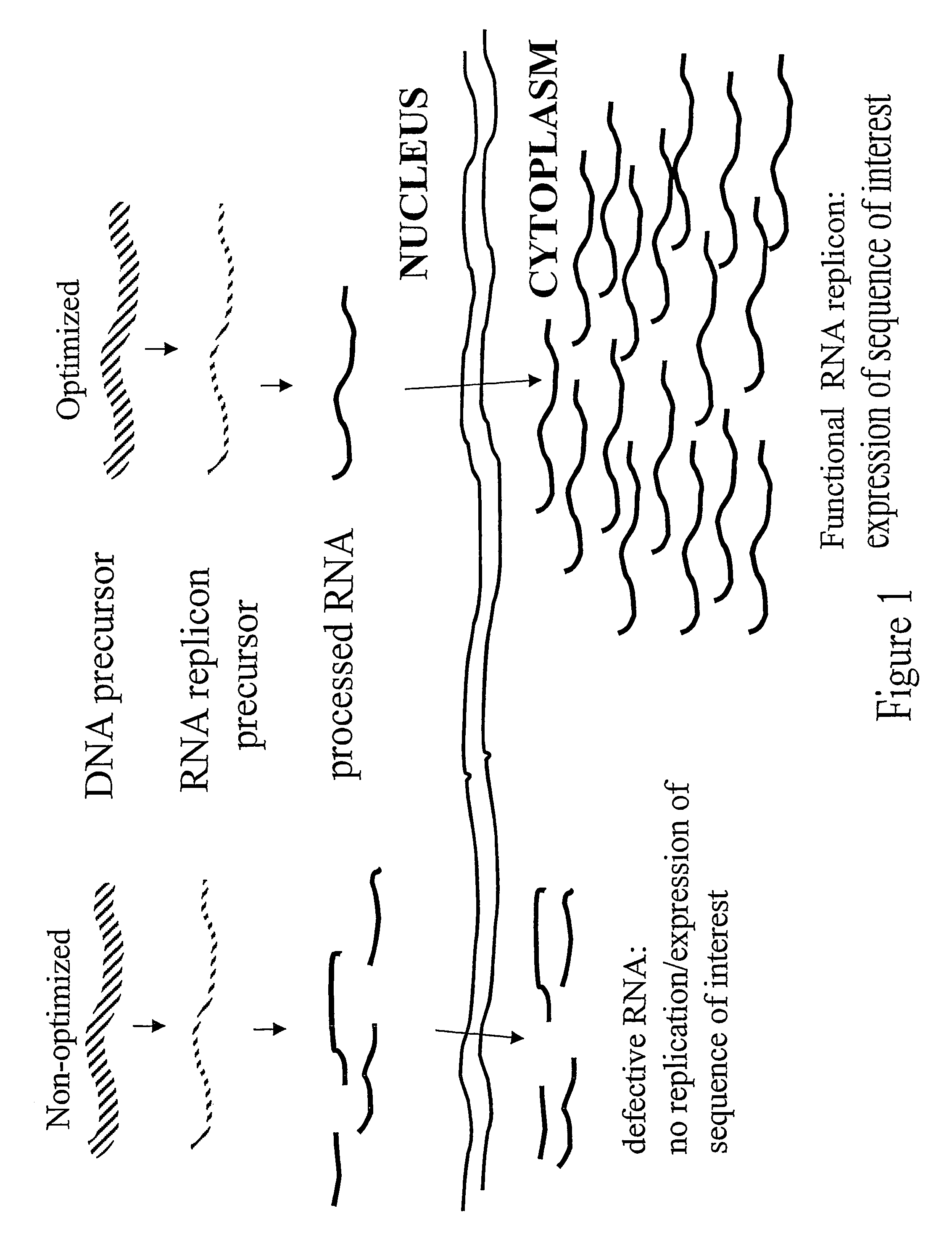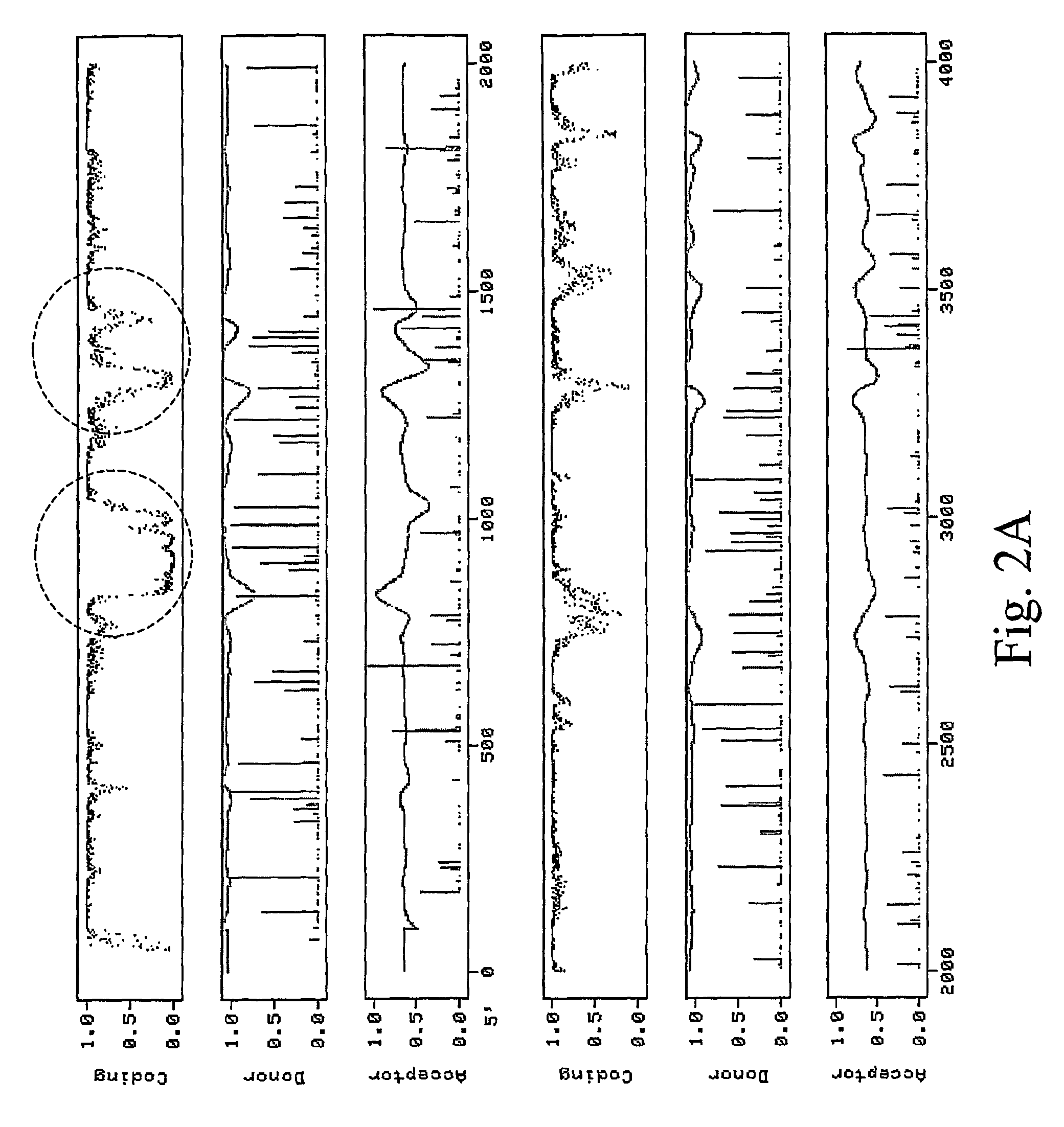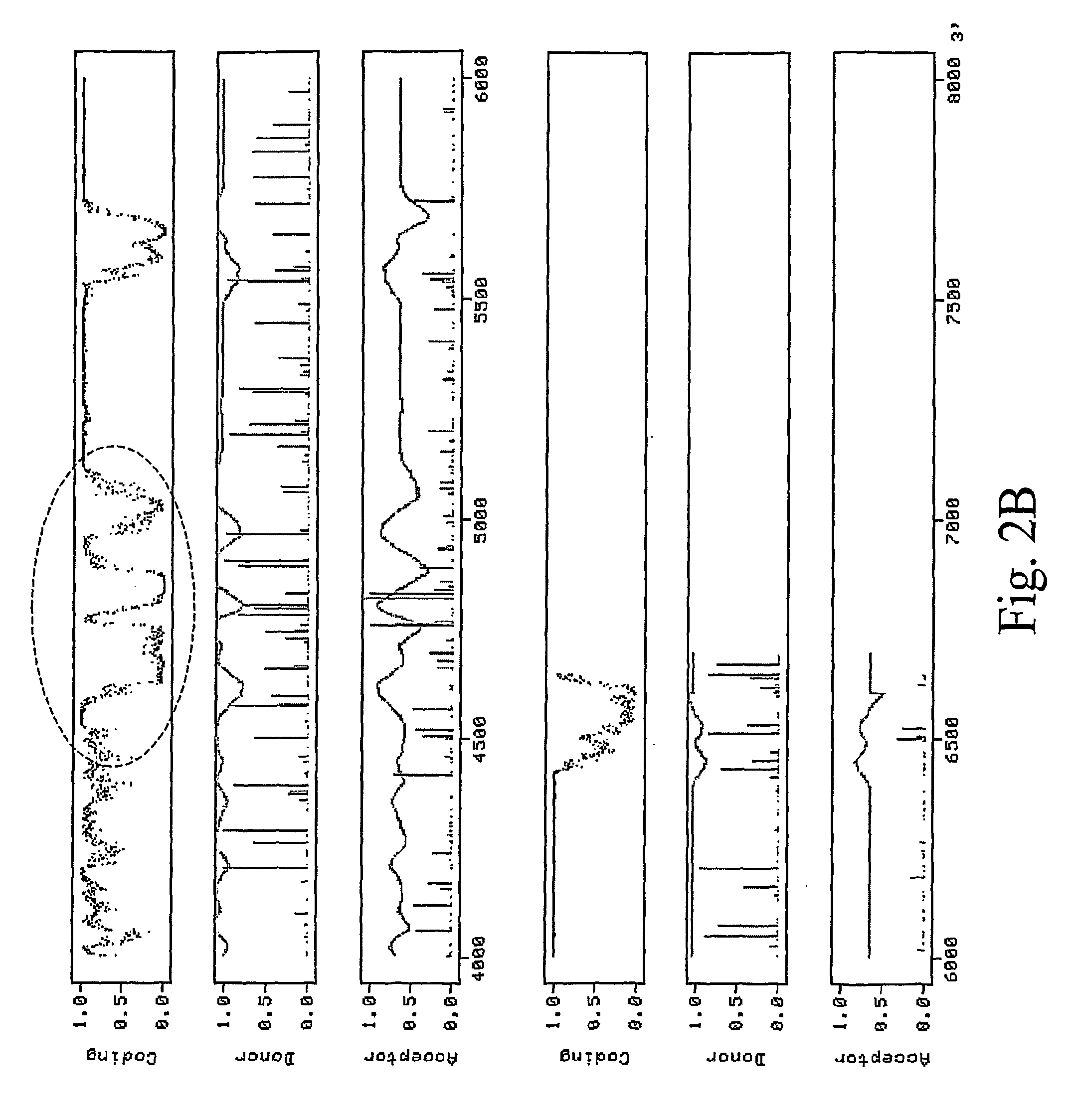RNA virus-derived plant expression system
a plant and virus technology, applied in the field of rna virus-derived plant expression system, can solve the problems of inefficiency and high cost, reduce the relative yield of recombinant products per unit of plant biomass, and system is still impractical, and achieve the effect of strong replicon formation frequency, low expression level of protein of interest, and strong increase of protein of interes
- Summary
- Abstract
- Description
- Claims
- Application Information
AI Technical Summary
Benefits of technology
Problems solved by technology
Method used
Image
Examples
example 1
Construction of a TMV-Based RNA Vector
[0122]Cloned cDNAs of the crucifer-infectng tobamovirus (cr-TMV; Dorokhov et al., 1994, FEBS Lett. 350, 5-8) and of the turnip vein-clearing virus (TVCV; Lartey et al., 1994, Arch. Virol. 138, 287-298) were obtained from Prof. Atabekov from Moscow University, Russia. A viral vector containing a green fluorescence protein (GFP) gene was made in several cloning steps. The resulting construct, pICH8543 (FIG. 6A), contains in sequential order: a 787 bp fragment from the Arabidopsis actin 2 promoter (ACT2, ref An et al, 1996, GenBank accession AB026654, bp 57962 to 58748), the 5′ end of TVCV (GenBank accession BRU03387, bp 1 to 5455), a fragment of cr-TMV (GenBank accession Z29370, bp 5457 to 5677, with thymine 5606 changed to cytosine to remove the start codon of the coat protein, CP), sequences “taa tcg ata act cga g”, a synthetic GFP (sGFP) gene, cr-TMV 3′ nontranslated region (3′ NTR; GenBank accession Z29370, bp 6078 to 6312), and finally the no...
example 2
Removal of Intron-Like Sequences Increases the Frequency of Viral RNA Replicon Formation in the Cytoplasm
[0126]We analyzed the sequence of the RNA replicon from pICH4351 using the Netgenell server program (Hebsgaard et al., 1991, J. Mol. Biol., 220, 49-65) and noticed several intron-like sequence features that might induce alternative splicing events. One such feature is a 0.6 kb uridine-rich region (corresponding to nt 827 to 1462 in GenBank accession BRUO3387) at the beginning of the RdRP (FIG. 2A). This region was replaced in pICH14833 by a PCR-mutagenized sequence that differs from the original sequence by a 54 nucleotide substitution (sequence given in the annex as SEQ ID No. 2; cf. FIG. 3). The 52 nucleotide substitutions were made to replace T-rich sequences by more GC-rich sequences. All nucleotide substitutions were made silent so as not to change the RdRP protein sequence. This mutagenized fragment also contains two nucleotide substitutions (at position 829 and 1459; coord...
example 3
Removal of Intron-Like Sequences in the MP Subgenomic Promoter
[0127]A second potentially problematic region corresponds to the MP subgenomic promoter (FIG. 2B). This region is very T-rich and resembles intron sequences very closely. As a consequence, many cryptic splice donor and acceptor sites are predicted in nearby sequences by intron prediction programs. Unfortunately, modifications cannot be made easily to this region without affecting subgenomic promoter function. We decided to completely mutagenize the entire region without regard for the subgenomic promoter, and to provide MP in trans to compensate for the expected loss of MP expression. As MP will not be expressed from this construct, we also deleted most of MP sequence except for the 3′ sequences that contain the CP subgenomic promoter which is required to drive expression of the gene of interest. We therefore replaced a 383 bp fragment in pICH14833 (bp 4584 to 5455 in GenBank accession BRU03387) by a 297 bp mutagenized fr...
PUM
| Property | Measurement | Unit |
|---|---|---|
| OD | aaaaa | aaaaa |
| OD | aaaaa | aaaaa |
| OD | aaaaa | aaaaa |
Abstract
Description
Claims
Application Information
 Login to View More
Login to View More - R&D
- Intellectual Property
- Life Sciences
- Materials
- Tech Scout
- Unparalleled Data Quality
- Higher Quality Content
- 60% Fewer Hallucinations
Browse by: Latest US Patents, China's latest patents, Technical Efficacy Thesaurus, Application Domain, Technology Topic, Popular Technical Reports.
© 2025 PatSnap. All rights reserved.Legal|Privacy policy|Modern Slavery Act Transparency Statement|Sitemap|About US| Contact US: help@patsnap.com



